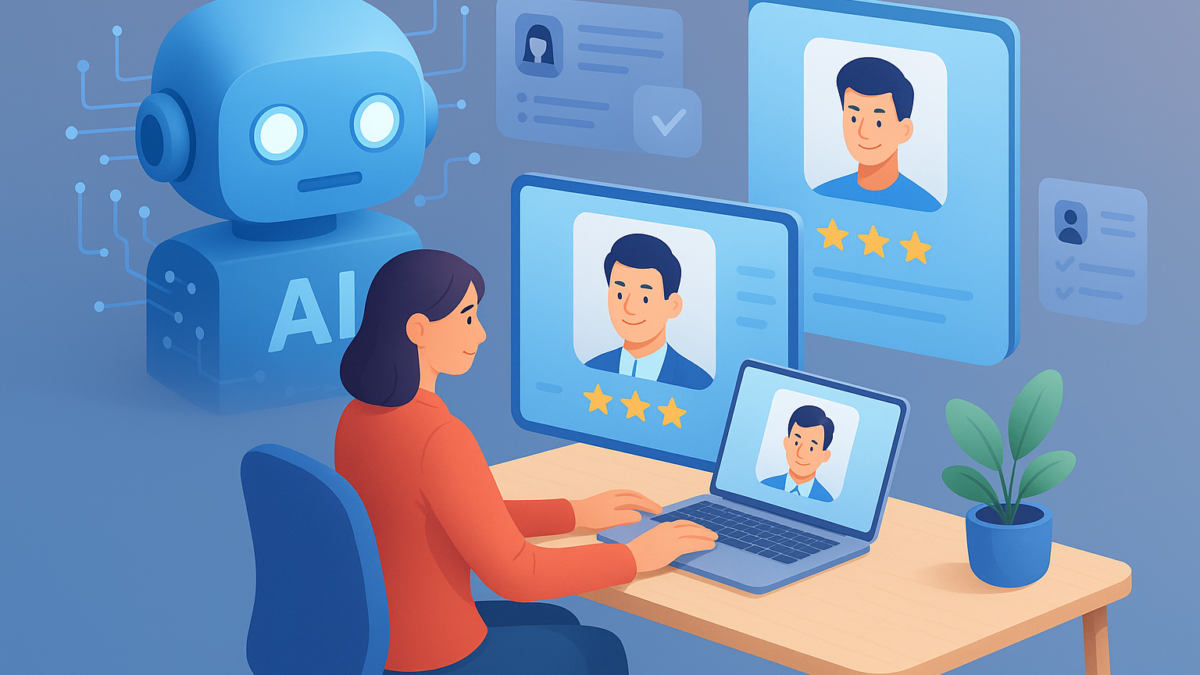AI-Powered HR: How Automation Is Redefining Recruitment in 2025
Explore AI-Powered HR Recruitment Automation Trends for 2025
Recruitment has evolved faster in the last three years than in the previous decade. As companies continue to scale in a digital-first world, HR teams face increasing pressure to hire faster, smarter, and more accurately. In 2025, the shift toward AI-powered HR has become a defining force—reshaping how organisations attract, evaluate, and onboard talent.
From automated sourcing to predictive hiring models and GenAI-driven assessments, automation is no longer a “nice-to-have.” It is a competitive necessity.
This blog explores how AI is transforming recruitment in 2025 and why companies are rapidly adopting hiring automation to stay ahead.
1. AI Is Now a Core Part of Talent Acquisition
In 2025, HR no longer relies solely on manual screening or recruiter intuition. Instead, AI supports the entire hiring lifecycle—from the moment a job is posted to the day the candidate joins.
Key capabilities AI now handles:
- Screening thousands of resumes in seconds
- Matching candidate skills to job requirements
- Predicting candidate success based on past performance data
- Eliminating manual scheduling and communication
- Enhancing the candidate journey with personalised interactions
Recruiters today spend significantly less time doing repetitive tasks. This shift enables HR teams to focus on interviewing, relationship-building, employer branding, and strategic decision-making.
2. Automated Resume Screening Improves Hiring Speed & Accuracy
One of the biggest challenges HR faces is filtering through massive numbers of resumes. Traditional methods take days and are prone to bias and inconsistencies.
2025 automation impact:
- AI-powered ATS tools scan thousands of resumes instantly
- Skill-based parsing ensures better accuracy
- Reduces human errors and unconscious bias
- Ensures only the most relevant candidates move forward
Modern AI systems evaluate not just keywords but context, achievements, and behavioural signals—leading to higher-quality shortlists.
3. Predictive Hiring Models Make Recruitment Data-Driven
2025 marks the rise of predictive analytics in HR. Instead of relying on guesswork, HR now uses data to forecast hiring success.
What predictive hiring can tell organisations:
- Likelihood of a candidate’s long-term performance
- Cultural alignment
- Retention probability
- Expected training timelines
- Future career growth potential
Using past hiring outcomes, AI creates models that accurately predict which applicants will thrive—reducing bad hires and turnover.
4. AI-Powered Sourcing Finds Talent Before Competitors Do
Sourcing used to be one of the most time-consuming tasks for recruiters. Today, AI automatically scans the internet to identify top candidates.
AI sourcing tools now search across:
- Job portals
- LinkedIn & social platforms
- GitHub, Behance, Dribbble (for tech & creative roles)
- Talent marketplaces
- Online communities and forums
These algorithms proactively create warm pipelines of talent—months before a role even opens.
5. Chatbots & AI Assistants Improve Candidate Experience
Candidate experience is a major differentiator in 2025. Slow or unresponsive communication can immediately discourage talent.
AI chatbots now handle:
- Initial screening questions
- Interview scheduling
- FAQs about company culture, benefits, and policies
- Providing status updates
- Answering follow-up questions in real-time
This makes engagement seamless, fast, and personalised.
6. Skill Assessments Are Now Fully Automated
With the rise of remote and hybrid workplaces, AI assessments have become the preferred method to evaluate talent at scale.
Modern AI assessments include:
- Coding and technical tests
- Behavioural analytics
- Video interviews with emotion + communication scoring
- Gamified skills tests
- Real-time scenario simulations
These tools offer consistent evaluation across all candidates—something manual interviews cannot guarantee.
7. Automation Reduces Hiring Costs for Businesses
Companies using AI-powered recruitment tools in 2025 report significant cost savings.
How automation cuts hiring costs:
- Faster shortlisting reduces recruiter hours
- Predictive hiring reduces turnover
- Automated sourcing lowers dependency on external agencies
- AI interviews eliminate travel and coordination costs
Recruitment ROI improves substantially when manual labour is replaced by intelligent automation.
8. Compliance, Documentation & Onboarding Become Seamless
AI doesn’t stop at hiring—it extends into onboarding.
AI-powered onboarding now manages:
- Document verification
- Automated tasks & workflows
- Policy explanation via chatbots
- New-hire training recommendations
- Device & tool allocation
This ensures new employees feel supported and productive from Day 1.
9. The Future: No-Touch Recruitment
By late 2025, many organisations are moving toward No-Touch Hiring, where up to 80% of the recruitment process is automated.
In a no-touch model:
- Job posting is automated
- Candidates are sourced by AI
- Screening + assessments run automatically
- Shortlists are generated without human intervention
- Recruiters only conduct final interviews
This transforms HR teams into strategic partners rather than administrative operators.
AI-Powered HR Automation in Recruitment: Strategies for 2025Final Thoughts
AI-powered HR is not replacing recruiters—it is empowering them.
In 2025, organisations that embrace automation will:
✔ Hire faster
✔ Improve candidate quality
✔ Reduce bias
✔ Cut hiring costs
✔ Create stronger employee experiences
HR teams that still depend heavily on manual processes will fall behind quickly. AI is not the future of recruitment—it is the present.
You May Also LikeICP Drift: Why Your Ideal Customer Profile Keeps Changing and How to Track It (2025 Guide)





